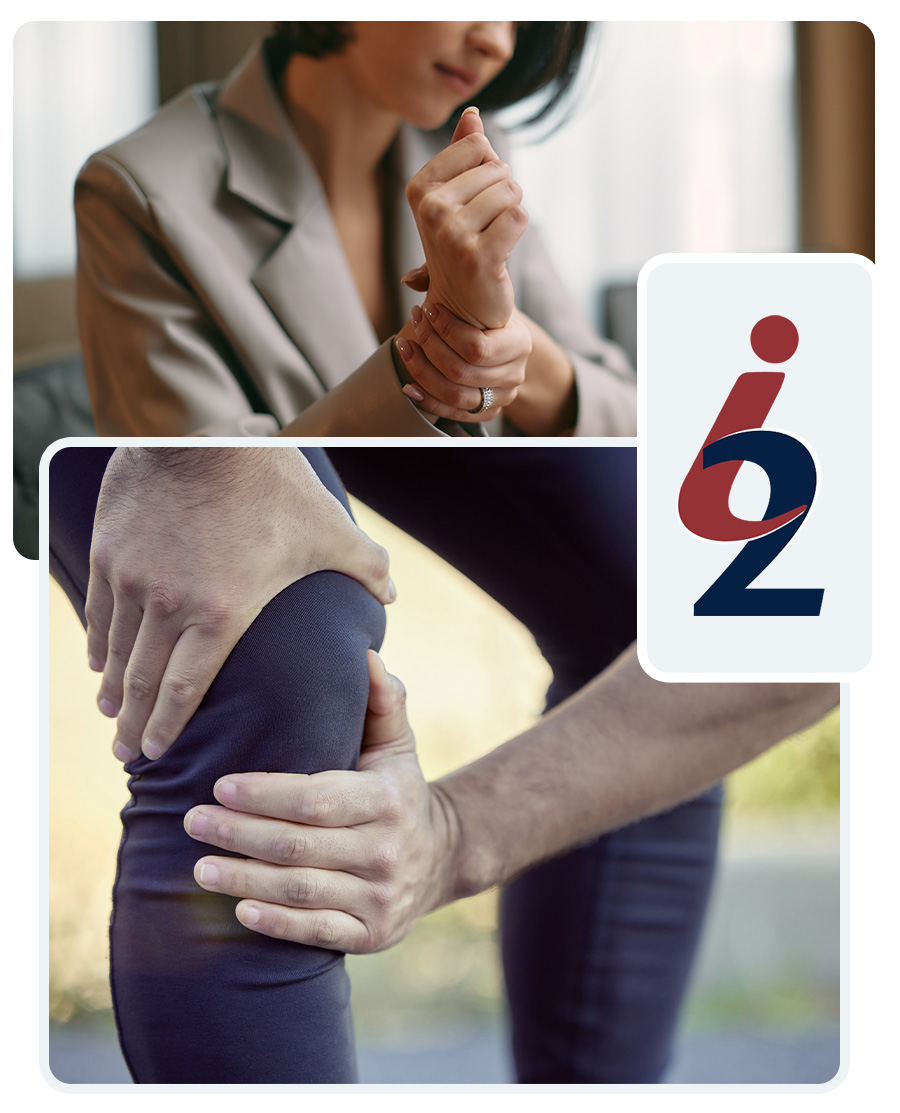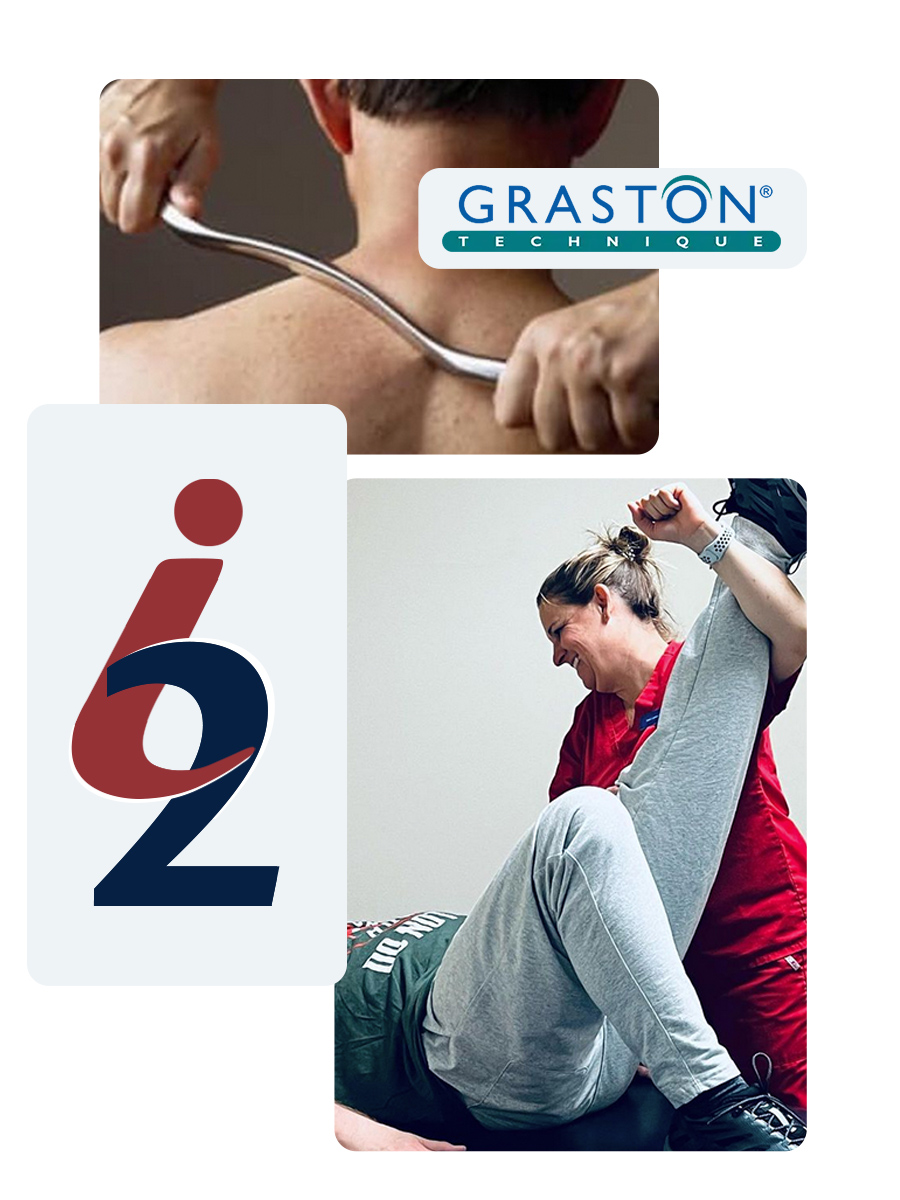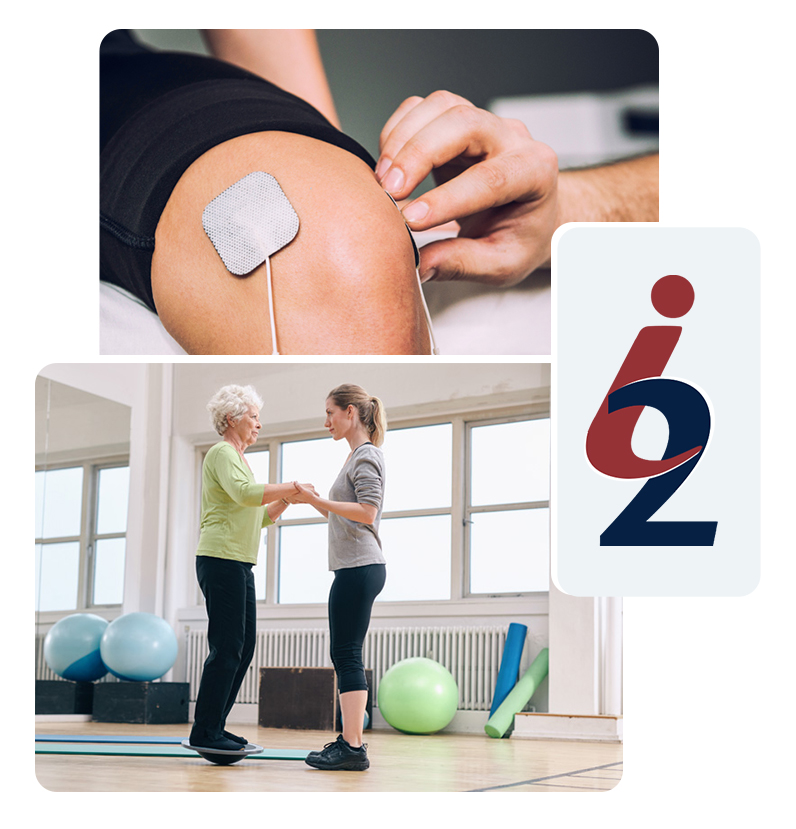Physical Therapy
Physical Therapy in Marietta | Dallas GA
Personalized physical therapy treatments designed to help you get back to the activities you enjoy most.
At Integrate2 Physical Therapy, we specialize in treating patients with a wide range of injuries and conditions, including orthopedic issues, hand injuries, sports injuries, spinal problems, arthritis, balance and coordination issues, chronic pain, and work-related injuries. Our welcoming, family-like atmosphere ensures that patients stay motivated and comfortable throughout their treatment, leading to successful outcomes. We utilize well-established protocols, up to date evidence based practices through our continuing education and a team of experienced therapists to deliver effective care. Regardless of your age or athletic level, Integrate2 Physical Therapy customizes each treatment plan to maximize results.
Common Conditions Physical Therapy May Help With
Physical therapists offer additional therapeutic support for a broad range of medical conditions. While we may not directly treat medical conditions beyond musculoskeletal issues, we focus on enhancing recovery and educating individuals on optimizing their movement patterns.
Here are some conditions that may benefit from physical therapy:
- Cardiopulmonary conditions, such as chronic obstructive pulmonary disease, cystic fibrosis
- Respiratory issues, such as chronic bronchitis as well as other respiratory disorders, can be treated with pulmonary rehabilitation plans by strengthening the lungs with diaphragmatic breathing tasks.
- Chronic fatigue syndrome, this complex disorder causes debilitating tiredness that CANNOT be improved with rest. Physical therapists, together with doctors and the patient, formulate a treatment plan with endurance training tasks.
- The hand, such as carpal tunnel syndrome and trigger finger
- Musculoskeletal dysfunction, including back pain, rotator cuff tears, and temporomandibular joint disorders (TMJ).
- Neurological conditions, such as stroke, Parkinson’s disease, multiple sclerosis, Huntington’s disease, vestibular dysfunction (Vertigo), and traumatic brain injuries (post concussion)
- Sports-related injuries, post concussion, ankle sprain, ankle fracture, ACL repair. Specific types of sports injuries like stress fractures can be treated with appropriate recovery programs or prevention exercises for a safe and quick recovery.
- Tendonitis, including tennis and golfers elbow, bicep tendonitis and more which can lead to other physical problematic conditions.
- Female health and pelvic floor dysfunction, including urinary incontinence
Regain Your Full Potential with Physical Therapy! Schedule Your Consultation Today!

The Benefits of Early Physical Therapy Intervention
Early physical therapy intervention means starting therapy promptly after an injury, surgery, or the first signs of discomfort or mobility issues.
Why it Matters
- Pain Management: Early physical therapy can help manage and even reduce pain. By targeting the root causes of discomfort from the start, you can minimize your need for pain medications and enhance your overall quality of life.
- Faster Recovery: Physical therapists specialize in evaluating your condition and creating personalized treatment plans that cater to your unique needs. This customized approach can speed up the healing process.
- Preventing Additional Harm: Without proper attention, minor problems may worsen and lead to more serious health concerns. Early intervention, on the other hand, can stop the progression of certain conditions and prevent them from escalating. By addressing issues promptly, you can minimize the risk of severe complications and promote better overall health.
- Improved Outcomes: Research indicates that patients who start physical therapy early generally experience better results. Whether you're recovering from a sports injury, surgery, or managing a chronic condition, timely intervention can help avoid complications and prevent long-term problems.
- Cost Savings: Seeking physical therapy early can often save you money over time. By tackling issues promptly, you may prevent the need for more costly and invasive treatments, surgeries, or extended rehabilitation.
FAQs
Make an Appointment

What Are Some Treatment Techniques That We Use?
Graston Technique
Graston Technique is an instrument – assisted soft tissue mobilization technique that allows us to detect and treat areas of scar tissue or adhesions in the muscles, tendons and ligaments that can reduce range of motion and cause pain.
Manual Therapy
A highly trained therapist will facilitate hands-on techniques to diagnose and treat soft tissue and joints to reduce pain and increase range of motion and function, here are just a few to mention:
- Soft tissue mobilization
- Myofascial Release
- Active Release Technique
- Functional mobilization
- Massage
- Graston Technique
- Joint Mobilization
Therapeutic Exercise
An exercise program created just for you and tailored to your diagnosis, that helps restore and build physical strength, endurance, flexibility, balance and stability.
Cupping
Softens tight muscles and tone attachments, loosen adhesions and lifts connective tissue, bringing hydration and blood flow to body tissues.
Dry Needling (Physician Prescription Required)
With a physician's approval, a very thin needle is pushed through the skin to stimulate a trigger point, which may release the tight muscle bands and lead to decreased pain and improved function.

Therapeutic Activity
Movement activities for a specific body part or could involve the entire body, we involve the use of functional activities such as bending, lifting, reaching, catching and overhead activities to improve functional performance.
Electrical Stimulation
A physical therapy treatment modality we may use to improve muscle function, decrease pain, or promote healing.
Balance Training
There are many areas to balance for preventing injuries and falls. Some of these areas include foot and ankle movement, foot sensation, head and eye coordination, center of gravity retraining and your depth perception. We address each of these areas with you to improve your overall balance.
Blood Flow Restriction (BFR)
Using a cuff placed around your arm or leg and closely monitored with specialized equipment, this will restrict blood flow to the affected muscles. While blood flow is restricted, you’re able to get the same strength training benefits from lighter weights that you would typically see from heavier weights without the added pressure on your joints reducing joint irritation. BFR also increases the speed of your overall muscle recovery. This is a technique that might be recommended to help patients who have weight-bearing restrictions placed on their recovery and/or painful joints with weak muscles.Kinesio Taping
Alleviates discomfort and facilitates circulation by microscopically lifting the skin.
